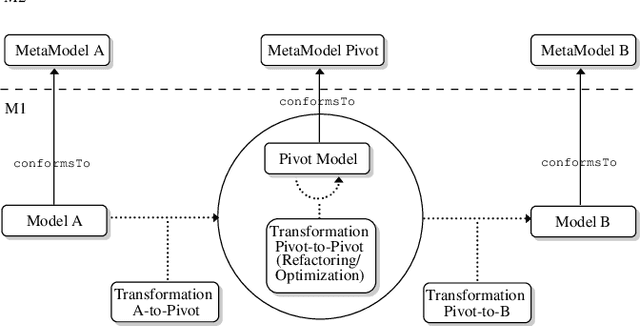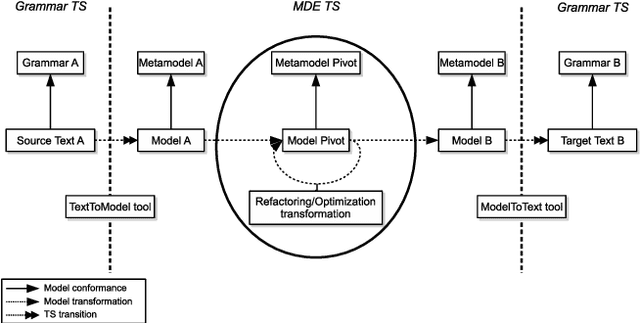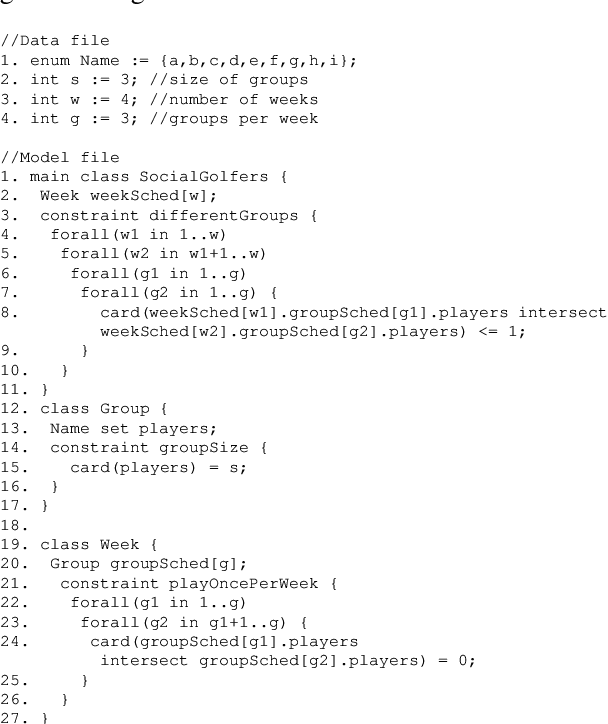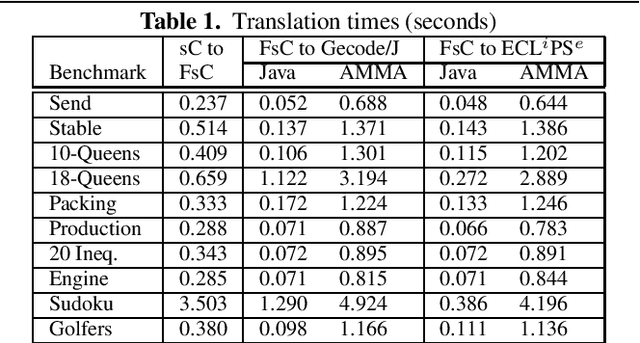Raphael Chenouard
LINA
Automatically Discovering Hidden Transformation Chaining Constraints
Mar 03, 2010



Abstract:Model transformations operate on models conforming to precisely defined metamodels. Consequently, it often seems relatively easy to chain them: the output of a transformation may be given as input to a second one if metamodels match. However, this simple rule has some obvious limitations. For instance, a transformation may only use a subset of a metamodel. Therefore, chaining transformations appropriately requires more information. We present here an approach that automatically discovers more detailed information about actual chaining constraints by statically analyzing transformations. The objective is to provide developers who decide to chain transformations with more data on which to base their choices. This approach has been successfully applied to the case of a library of endogenous transformations. They all have the same source and target metamodel but have some hidden chaining constraints. In such a case, the simple metamodel matching rule given above does not provide any useful information.
Using ATL to define advanced and flexible constraint model transformations
Feb 16, 2010



Abstract:Transforming constraint models is an important task in re- cent constraint programming systems. User-understandable models are defined during the modeling phase but rewriting or tuning them is manda- tory to get solving-efficient models. We propose a new architecture al- lowing to define bridges between any (modeling or solver) languages and to implement model optimizations. This architecture follows a model- driven approach where the constraint modeling process is seen as a set of model transformations. Among others, an interesting feature is the def- inition of transformations as concept-oriented rules, i.e. based on types of model elements where the types are organized into a hierarchy called a metamodel.
Rewriting Constraint Models with Metamodels
Feb 16, 2010



Abstract:An important challenge in constraint programming is to rewrite constraint models into executable programs calculat- ing the solutions. This phase of constraint processing may require translations between constraint programming lan- guages, transformations of constraint representations, model optimizations, and tuning of solving strategies. In this paper, we introduce a pivot metamodel describing the common fea- tures of constraint models including different kinds of con- straints, statements like conditionals and loops, and other first-class elements like object classes and predicates. This metamodel is general enough to cope with the constructions of many languages, from object-oriented modeling languages to logic languages, but it is independent from them. The rewriting operations manipulate metamodel instances apart from languages. As a consequence, the rewriting operations apply whatever languages are selected and they are able to manage model semantic information. A bridge is created between the metamodel space and languages using parsing techniques. Tools from the software engineering world can be useful to implement this framework.
Model-Driven Constraint Programming
Feb 15, 2010



Abstract:Constraint programming can definitely be seen as a model-driven paradigm. The users write programs for modeling problems. These programs are mapped to executable models to calculate the solutions. This paper focuses on efficient model management (definition and transformation). From this point of view, we propose to revisit the design of constraint-programming systems. A model-driven architecture is introduced to map solving-independent constraint models to solving-dependent decision models. Several important questions are examined, such as the need for a visual highlevel modeling language, and the quality of metamodeling techniques to implement the transformations. A main result is the s-COMMA platform that efficiently implements the chain from modeling to solving constraint problems
 Add to Chrome
Add to Chrome Add to Firefox
Add to Firefox Add to Edge
Add to Edge